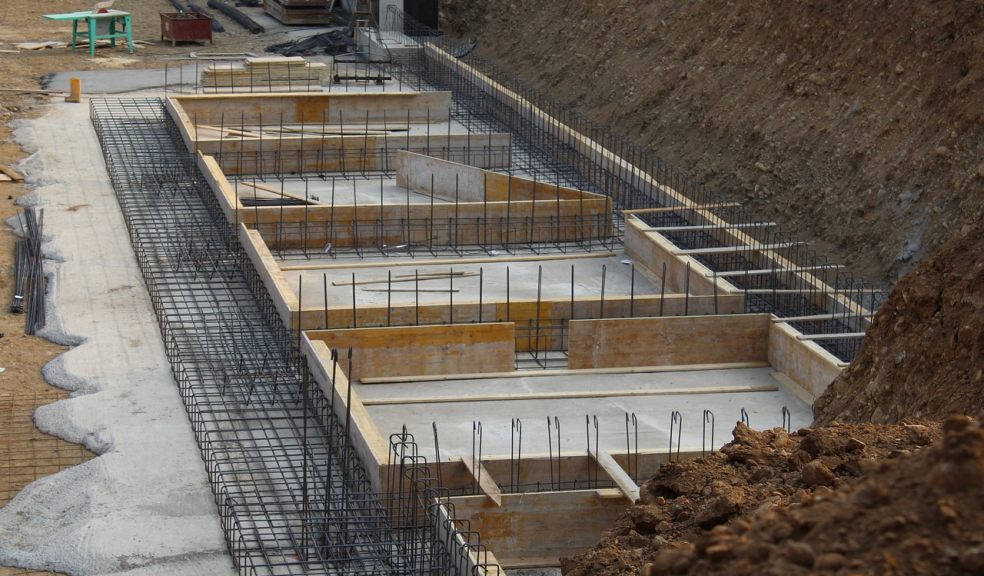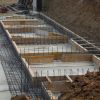
A guide to pile foundations for homes
Piles are simply long cylinders made using strong and robust materials such as concrete that are pushed into the ground to provide steady support for a structure built on top of the foundation.
We use pile foundations in situations such as:
#1. Instances where the top layer of soil at the construction site is weak. Such a layer does not provide ample support for the weight of the building. As such, the piles are used to transfer loads of the structure to a stronger and sturdier layer of soil or rock.
#2. Instances of a heavy building or a structure with concentrated loads. Pile foundations are used in high rise buildings, water tanks, and bridges.
A pile foundation is designed to transfer the taking the enormous loads much better than spread footings. Take a look at Groundsun for more information. We classify pile foundations in 2 categories based on structural behavior. Each category of pile foundation works differently.
End Bearing Piles
With end bearing pile foundations, the end of the pile rests on a layer of the strong rock or soil. As such, the load exerted by the structure is transferred to the especially strong layer of rock or soil through the piles. In many regards, the piles act as columns.
The main principle that makes these piles work is having the bottom end of the piles rest on the intersection of the strong and weak layer of soil or rock. In doing this, the load bypasses the weak layer of soil and safely transfers to the strong layer.
Friction Piles
Friction piles rely on an entirely different principle. Typically, the piles are designed and installed to transfer the load of the structure using the entire surface of the pile by using friction. In this setup, the entire cylinder surface of the pile surface transfers load to the soil,
To understand this principle, visualize pushing a solid metal rod, say 4.5mm diameter into a tub of frozen ice cream. Once you push the rod in, it can support some load with ease. And when you drive the rod into the ice cream even further, the larger a load the rod can support.
This is the same principle of how friction pile works. In this kind of foundation, the amount of load a pile can support is directly proportionate to the length of the pile.
Pile Foundation Materials
Piles are made using concrete, steel, or wood.
Traditionally, wooden piles were used to support structures in places with weak soil. That said, wooden piles are still used to makes structures such as jetties. For wooden piles, the tree trunks need to be exceptionally straight. The length of the pile is typically limited to the length of the tree trunks. Given that you cannot join tree trunks to elongate the pile, wood piles are typically limited to 20m.
A good example of the use of wooden piles can be found in the city of Venice. The entire city is built on wooden piles driven into sea water.
Pile Foundations
Cross Sections Of Different Types Of Pile Foundations
In the case of concrete piles, they are precast at ground level and thereafter driven into the ground, usually by hammering. For steel H-piles, the piles are simply driven into the ground.
Steel H-piles can take heavy loads. They also save a lot of time as pile casting is not a necessary process. Note that the steel piles are not given a protective coating as the soil scrap the layer off as the pile is being driven in. Therefore, areas where corrosive soil is a problem, concrete piles are used instead.
Using Pile Foundations
Given that pile foundations carry a lot of loads, a lot of care must go into designing them. As such, professional engineers will study the soil around the construction sites to ensure that the piles do not overload the soil or rocks beyond their bearing capacity.
One of the most important considerations to have in mind when designing pile foundations is the zone of influence of every pile. Engineers need to ensure the piles far part to distribute the loads evenly over the entire bulb of soil. The load should not be concentrated in one place.
Pile Foundations Load Pattern
The zone of influence of piles is the load pattern of piles on the surrounding soil. Typically, engineers will group a number of piles together and then add a pile cap at the top. A pile cap is a thick concrete cap that covers a group of small piles. It serves as the base for the construction of columns. The load that the column bears is distributed to all the piles in that group.
Construction Of Piles
Pile Construction And Pile Driving
Piles are either precast and driven into the soil or cast-in-place.
For cast-in-place piles, construction follows the following steps:
- Hammer a steel tube with thin-walls into the ground
- Remove all the soil inside the tube
- Place a steel reinforcement cage through the entire length of the tube
- Pour wet concrete into the tube to cast the pile
The steel tube, better known as the casing, is used to secure the mold during the concrete casting. It also ensures that the cast concrete is free of soil and other debris. After casting, the steel tube does not play any other role.
There are soils with exceptional cohesive properties. Once you drill through such soils, the soils hold shape. It does not carve into itself and block it but retains the shape of the hole. If you have such soils, you can cast the piles without leaving the casing in place. You can use the steel casing for drilling purposes and then remove it. Thereafter, you can cast the pile as is without the pile. This lowers the cost as you can reuse fewer casings to drill pile holes.
For precast piles, they are cast above ground first and later on driven or hammered into the ground with a pile driver. The machine holds the pile vertical and hammers the pile into the soil slowing. To dive in the pile, they are first covered with a temporary protective steel cap. Thereafter, the machine lifts and rotates the piles in place. A heavyweight is then dropped on the piles, hammering the piles into the ground.
Piles are usually hammered into the ground until they reach the refusal point – a point where they can no longer be driven further into the soil.

















